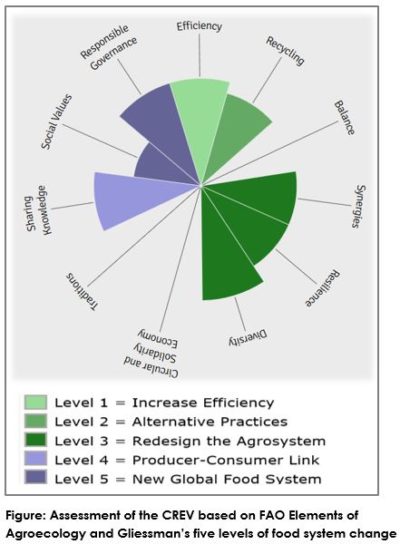Category:
![]()
Implementing Organisation:
Institute of Rural Development Planning (IRDP)
Period:
2011 – Now
In a nutshell

The Chololo Ecovillage project adopted a holistic approach to meeting the multiple challenges communities face the in the context of climate change
Building on local knowledge, traditional practices and natural resources, it revolved around a package of agroecological practices or ‘technologies’, aimed at making the most of the limited rainfall, improving soil fertility, reducing farmers’ workload, and improving the quality of local seeds.
The project took a participatory approach from the assessment of climate vulnerability and capacity to knowledge generation and dissemination.
The second phase of the project is focused on scaling out the approach to three more villages and involving local and national authorities to climate adaptation planning.
Context
Chololo village, located in the semi-arid drylands of Central Tanzania, faces challenges typical to this agro-pastoralist region: recurrent drought, food insecurity, and vulnerability to climate change. Some of the key issues identified by residents and the village committee range from increased drought frequency, deforestation, flooding and strong winds, to human diseases, livestock diseases, crop pests, and inadequate ground water recharge.
These problems were compounded by the traditional dependency on rain-fed agriculture, the use of simple farm implements (such as hand hoes), the unsustainable use of natural resources, a lack of enforcement of natural resource by-laws, and a lack of awareness of climate change. The Ecovillage project came at a time when the slash and burn model was nearing exhaustion.
Objective
The main goal of this project is to address climate vulnerabilities and create a model of good practice in climate adaptation, based on testing, evaluating and rolling out over 20 ecological ‘technologies’ in agriculture, livestock, water, energy, and forestry. It is also focuses on planning climate change strategies with local and national authorities.
Key Interventions
Farm level:
- Package of agroecological practices, including manure-based increase of soil fertility and optimal planting schedules.
- Livestock-specific interventions: introduction of improved breeds of cattle, goats and chickens & use of crop residues to feed livestock.
- Community level interventions: improvements to water conservation features, such as contour ridges, grass strips and gully healing to capture rainwater and prevent soil erosion, sustainable forestry and agroforestry and water management
- Creation of ‘technology groups’ for knowledge transfer and farmer-to-farmer outreach
Regional/national Level:
- Building the capacity of the two local authorities to plan and implement climate change strategies
- Knowledge management system to share the learnings on national level, through visits from national policymakers & involvement of local policymakers
Lessons Learned/challenges
In the eyes of participants and outside observers, the project was successful because of its multi-dimensionality. It has both a multi-sectoral focus (agriculture, livestock, water, energy, resources) and a multi-disciplinary project team (university, government, agricultural research institute, local authority & NGOs) for wide buy-in. Efforts were undertaken to ensure virtuous circles between the project and national policies, particularly around climate adaptation through a conscious alignment with national climate adaptation policy.
Relevant Links & references
- Chololo Eco-village 2018 WordPress
- IPES-Food 2018 “Breaking away from industrial food and farming systems: Seven case studies of agroecological transition.”
- AFSA Case Studies “Chololo Ecovillage a model of good practice in climate change adaptation and mitigation”
